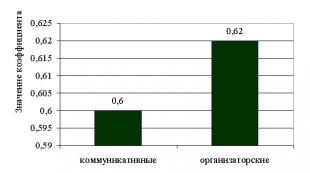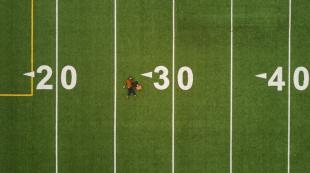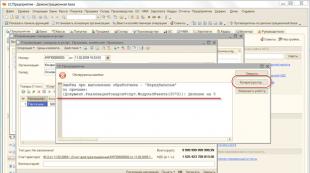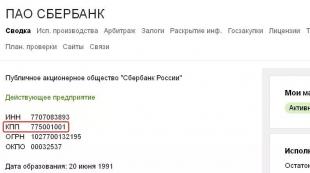New York Stock Exchange. How to trade on it? New York Exchange - New York Stock Exchange (NYSE) New York Stock Exchange opening hours
Two hundred years ago, the New York Stock Exchange was created, a symbol of US economic power with a daily turnover of billions of dollars and a total capitalization of over $20 trillion. 60% of all stock transactions on the planet are carried out in an office on Wall Street; the largest companies place shares on the New York Stock Exchange. How the history of the exchange began and what impact it has on the global economy - in the RBC photo gallery.
With the participation of Anna Kim
On March 8, 1817, the New York Stock Exchange (NYSE) was founded in the United States - the world's largest American stock exchange. The stock exchange determines the Dow Jones Industrial Average, along with the NYSE Composite and NYSE ARCA Tech 100 indices, and the global trend for economic growth or decline depends on whose hands the initiative is.
In the photo: workers receive instructions before the exchange begins work

Formally, the history of the NYSE began in 1792. Then 24 American brokers signed the Buttonwood Agreement, or “Sycamore Tree Agreement,” according to which they formed an investment company and two rules: to enter into transactions only among themselves and to pay a tax of 0.25% on each concluded transaction. The exchange acquired its first securities, trade in them was of a barter nature, and the Tontine Coffee House became a place for regular meetings. After 25 years, it was decided to allow auctioneers to trade and transfer all operations from the coffee shop to the stock exchange. This is how the New York Stock Exchange was created in the form in which it operates today.

Photo: Express / Archive Photos / Getty Images
At the end of October 1929, the US stock market crashed. In one day, the Dow Jones index fell by 11%, a panic sale of stocks began in the country, and investors, hoping to gain at least some money, sold almost 13 million securities that day. October 24, 1929 was called "Black Thursday", followed by "Black Friday", "Black Monday" and "Black Tuesday". The events of October 24-29, known as the Wall Street Crash, triggered the start of the Great Depression.

Photo: Museum of American Finance / Flickr
The NYSE experienced all the consequences of crisis situations in the country, and sometimes was their initiator. On August 31, 1914, due to the outbreak of the First World War, the exchange closed for four months, partially resuming its work towards the end of November to allow trading of bonds in support of the Entente countries. On December 12, the opening day of trading, the Dow Jones Industrial Average (DJIA) fell 24.4%.
Photo: Police disperse strikers outside the New York Stock Exchange, 1948

Photo: Bettmann/Contributor/Getty Images
On Black Monday, October 19, 1987, the Dow Jones Industrial Average fell an all-time high of 22.6%, affecting the financial industry around the world. In response, the US Securities and Exchange Commission introduced new rules to protect individual investors.

Stock Pricing, CA. 1960-1975 Photo of a woman looking at stock prices as they come out of the quotation machine. Wall of stock quotes behind woman.
(Photo: Museum of American Finance / Flickr)
The trading session on the NYSE opens at 9:30 am and ends at 4:00 pm New York time. Originally, the start and end of trading was signaled by the sound of a hammer, but since the 1800s this was replaced by the sound of a bell. As soon as the closing bell rings in each of the four trading floors, trading stops.

(Original Caption) New York: As busy as a beaver once again 9/12 a floorman at the New York Stock Exchange takes orders during record volume day that saw the Dow Jones industrial average rise and fall like a roller coaster.
(Photo: Bettmann/Contributor/Getty Images)
It is believed that the most expensive shares listed on the New York Stock Exchange belong to Warren Buffett's American company Berkshire Hathaway - more than $215 thousand per share.

The largest IPO in the world is considered to be the public offering of shares of the Chinese company Alibaba Group, operating in the field of Internet commerce, which occurred in September 2014.

To be listed (a series of procedures for including securities on the exchange list) of the New York Stock Exchange, you need to meet the minimum indicators: profit for the previous two years - at least $3 million, income before taxes for the last year - $2.7 million, net worth assets - $18 million, the minimum number of shareholders owning one hundred shares or more - at least 2 thousand.

More than 4,000 companies trade daily at the Wall Street office, including American Express, MasterCard, Microsoft, Nike, Johnson & Johnson and Visa. As of December 2016, the NYSE stock market capitalization exceeded $20 trillion.
In the photo: a Russian dancer on the day of the placement of shares of the VimpelCom company on the stock exchange, which became the first company from Russia to place shares on the New York Stock Exchange
Many readers probably associate the concept of “American stock exchange” with those images that are captured in many American feature films, literature and news feeds of news agencies. Mostly, this image looks like some kind of place where the capitalists and oligarchs of the whole world make huge money day and night on their Wall Street, and because of them all the troubles in the world economy, the exploitation of the proletariat and everything in the same spirit.
In reality, of course, everything is not quite like that. The largest stock exchange in the United States and the world, called the New York Stock Exchange, or New York Stock Exchange (NYSE), has a total capitalization of its listed companies of more than 19 trillion. dollars, with an average daily trading turnover of 200-250 billion dollars (only for the stock section, not including the foreign exchange derivatives market and others). There are also large US stock exchanges, for example, such as the Philadelphia, Chicago Derivatives Exchange or the NSE's closest competitor, the American Amex Stock Exchange.
But nevertheless, the priority remains with the National Stock Exchange, since Wall Street is a system that has been built for more than 200 years and has unquestioned authority throughout the global financial and business world.
The trading platform itself is located on Wall Street 11, in a building built at the very beginning of the 20th century. The building itself contains 21 special rooms, or trading floors, equipped with the latest technology means of communication, trading terminals, and displays. Trading on the American stock exchange always begins with the traditional ringing of the bell at 9:30 am and ends at 4:00 pm also with the striking of this bell.
There are 4 of them in total (for each trading section) and they are located in different rooms. Of course, now trading takes place for the most part through electronic trading platforms, but tribute to tradition, memory and respect for those who stood at the origins is still carefully preserved by traders of the 21st century.
The New York Stock Exchange, whose official website is www.NYSE.com, also has representative offices in many international financial organizations and Associations. Since 2007, the NYSE began to work together with the European platform EURONEXT under the overall management of the exchange holding company Intercontinental Exchange, headquartered in New York. Currently, the general manager of the united exchange platform is Thomas Farley.
Trading on the American stock exchange is directly regulated by a special government organization, the SEC. In addition, there are a wide variety of laws regarding stock exchanges in the United States, one of the most severe, for example, is the “insider trading law.”
Brief historical background
But still, the first stock exchange in the United States began its activities a little earlier. It was an auction site where farmers and wholesale buyers made transactions for wheat, cotton, tobacco and other agricultural products. This auction in 1792 became known as the “Buttonwood Agreement” and in fact it was the first US law on the stock exchange, which was semi-official in nature. In 1817, auction stockbrokers decided to unite all types of transactions under one brand - the New York Stock and Exchange Board, and it was located on the premises of the Tontine Coffee House trading house.
Trading on the US stock exchange began to take on final and modern features only after the 1st World War. But already in the infamous 1929, the most dramatic collapse in the entire modern history of the National Welfare Fund occurred. On October 24, 1929 (Black Thursday), the market crashed, and quotes on the New York Stock Exchange lost tens of percent in just one day, which marked the beginning of the Great Depression, which lasted until 1938.
There were no such “flash crashes” later, but there were moments when there was serious panic on Wall Street, for example:
- 1971(oil crisis)
- 1997 –Asian crisis
- 2001 September 11– terrorist attack on the Twin Towers
- 2010– a short-term collapse of the Dow index by 988 points. This incident occurred due to the incorrect position of one large brokerage house.
After this, the government supervisory authorities (SEC and CFTC) introduced a provision into the US Securities Exchange Act, which stated the right of the trading platform to suspend trading in futures instruments in the event of strong price movements that are not motivated by the market.
Read also:
General characteristics of the American market and trading on US stock exchanges
The main characteristic of trading operations is their commitment (even despite the presence of electronic trading platforms) to the old traditions of auctions. These trading auctions take place in the so-called “exchange pit” or trading floor.
At the same time, a broker on the American stock exchange is not only just a technical intermediary, but also plays the role of an auctioneer in favor of his client (buyer or seller), actively trading up or down depending on the agreements. Even after the introduction of the electronic system in 1995, until 2007 there was a hybrid trading system, where the same broker could work in different formats.
Trading on the US stock exchange is not only profitable, but also prestigious. American stock exchange brokers pay huge commissions for space on the trading floor, and on average, one such seat can cost at least hundreds of thousands of dollars a month. Naturally, in order to pay such commissions, the brokerage turnover on the New York Stock Exchange must reach tens of millions of dollars, which, in principle, is not a big deal given the demand from clients from all continents.
In addition, a broker for the American stock exchange is another important element in attracting clients for the initial placement of their shares. Moreover, Russian companies also actively use American stock exchanges, as, for example, can be seen from the table presented.
Our companies are listed in the form of special depositary receipts. The US Securities Exchange Act allows foreign companies to list on their trading platforms, but the selection, auditing and listing process is very strict.
Receipts
|
US stocks
|
As for the American market itself, again, as can be seen from the table and graph of the main Dow Jones Industrial Index, the situation is in many ways reminiscent of the beginning of 2008, when there are no new drivers for growth (and the market has stood still for almost a year at its highs , and there are no new reasons for the fall yet (or they have not yet been invented). Most likely, closer to the US presidential elections, the global investment community will again see what a financial crisis is, because even now it is clear that the pillars of the American economy are trading more in the red zone, than in green - i.e. they are simply sold.
Here it is also worth saying a few words about the main indices of American stock exchanges:
- Dow Jones Index (1897)– calculated based on the weighted average of 30 leading companies across the entire industrial and business spectrum of the country. This list is periodically revised.
- S&P 500, or the broad market index (in trading slang - “spike” or “husky”) also covers all sectors of the economy, but on a larger statistical basis - 500 issuing companies. It is the one that is more preferable for market analysis.
- Nasdaq– a special index of the high-tech industry sector. It includes data on venture capital and emerging investment companies.
As a conclusion and recommendation. It is natural to believe that many are of little interest in what is happening somewhere on the exchanges of another continent. However, everything that happens on world exchanges is a direct reflection of processes that in one way or another affect the life of almost every person on the planet.
And even basic knowledge about these things can not only broaden your horizons, but add something for the practical side of your activity or in real business.
Almost all people (even those who are not familiar with trading) associate the phrase “stock market” with Wall Street and the NYSE (New-York Stock Exchange), the oldest and most famous exchange in the United States. Having a listing on the NYSE has always been a prestigious and expensive pleasure, so shares of the largest and most famous companies (Bank of America, General Electric, Exxon, Ford, Freeport-McMoran, etc.), whose products are known all over the world, are traded on NYSE.
Mergers and acquisitions
The New York Stock Exchange was no exception. Since 2000 A series of mergers and acquisitions began on the NYSE, which led the exchange to the form in which it exists today. Until then, in the United States, in addition to the NYSE, there were (existed) other exchanges - NASDAQ (still exists to this day), CME (exists to this day), AMEX (joined the NYSE), NYMEX (joined the CME), COMEX (joined in NYMEX) and so on.
In 2006, the NYSE absorbed the electronic exchange Archipelago Holdings, which served as the basis for the creation of NYSE Arca Equities (also called the younger sister of the NYSE) and NYSE Arca Options (together with NYSE AMEX Options they form a single platform for trading certain instruments). NYSE Arca Equities trades approximately 8,000 small- and mid-cap securities and ETPs, which include ETFs, ETNs, and ETVs. Shares of such giants as Adobe, Apple, Cisco, Dell, Hewlett-Packard, IBM and Microsoft are traded on NYSE Arca. Listing rules on NYSE Arca are less demanding, so for many companies, Arca is an opportunity to trade within the NYSE structure and subsequently transfer directly to the NYSE in the most premium segment. Actually, during this period, the NYSE itself becomes a joint stock company and begins trading with a capitalization of $22.5 billion.
In 2007, the NYSE merged with the pan-European exchange Euronext, which included the Paris, Amsterdam, Brussels and Portugal exchanges, as well as the London International Financial Futures and Options Exchange (LIFFE). The total capitalization of companies traded on Euronext was $2.9 trillion. According to this indicator, for the specified period of time, the exchange ranked fifth in the world. After this merger, the NYSE becomes known as NYSE Euronext.
Next comes the merger of NYSE Euronext with AMEX - the American Stock Exchange - one of the oldest exchanges in the United States, which in 1972 was almost equal to the NYSE in terms of the number of companies listed on the exchange. AMEX specialized in trading government bonds, but also traded stocks and futures contracts. Before the NYSE, the AMEX exchange had already been purchased by another stock exchange, NASDAQ, in 1998, but AMEX members bought their stake from NASDAQ in 2004. AMEX served as the basis for the creation of two other platforms in 2012: NYSE MKT - for trading shares of small and mid-cap companies, NYSE AMEX Options - for trading options.
But after some time, NYSE Euronext itself was absorbed. This was done in 2013 by ICE (Intercontinental Exchange) for $10.9 billion. ICE was formed in 2000 by Jeffrey Spretcher on the basis of the Continental Power Exchange he purchased (specializing in energy trading) with the support of such well-known banks and companies as Goldman Sachs Morgan Stanley, British Petroleum, Total, Shell, Deutsche Bank and Societe Generale. Before the merger with NYSE Euronext, ICE was actively buying up exchanges around the world - this was necessary to create a business trading in energy contracts. ICE included:
IPE (International Petroleum Exchange), which traded a contract for Brent oil;
. CCX (Chicago Climate Exchange) - Chicago Climate Exchange, which traded quotas for greenhouse gas emissions into the atmosphere;
. NYBOT (New-York Board of Trade) - New York Chamber of Commerce, which traded futures for agricultural products. NYBOT was later spun off into ICE Futures US.
. Winnipeg Commodity Exchange - Canadian exchange specializing in trading in agricultural products, later separated into ICE Futures Canada;
. ChemConnect is a platform on which representatives of about 150 countries traded large quantities of chemical industry products.
After the merger of ICE and NYSE, ICE spins off Euronext (without LIFFE) and conducts its IPO in 2014, during which it sells 60% of its shares.
Actually, through the mergers and acquisitions described above, the current ICE NYSE was created. Moreover, ICE itself is listed directly on the NYSE, which is the most prestigious global platform. More than 3,000 companies with a total capitalization of over $20 trillion are traded on the NYSE, with an average daily turnover of about $60 billion.
Today, the NYSE offers markets such as NYSE MKT, NYSE AMEX Option, NYSE Arca Equities, NYSE Arca Option and NYSE Bonds (which offers bond trading).
Conclusion
The NYSE is a platform on which a huge number of exchange assets are traded, including shares of the world's most famous corporations. These include stocks that are growing faster than indices or show amazing resistance to market declines, which, coupled with the highest liquidity, allows you to build truly diversified portfolios to achieve maximum financial results from your investments.
Once again I am glad to welcome you to my blog!
Speaking about platforms for trading shares, it is impossible to ignore the world's largest stock exchange - NYSE (The New York Stock Exchange). In Russian, its name sounds like the New York Stock Exchange. She is also one of the oldest - she is more than two hundred years old. This is a kind of symbol of American power.
I have no doubt that everyone is interested in knowing how it all began, what events the exchange went through and how it dealt with difficult times. Let's take a look!
The structure of this wonderful institution is best presented in the form of a table:
History of the NYSE
In 1792, 24 brokers decided to unite and signed the so-called Buttonwood Agreement to create the New York Stock Exchange (NSE). This name was purely nominal, since all trade, as before, was carried out in coffee shops. There wasn't even a dedicated building. Trade was carried out in the old fashioned way, mainly through barter transactions.
The first securities to be traded on the NYSE were shares of the famous The Bank of New York.
In 1817, representatives of The New York Stock Exchange visited their competitor, the Philadelphia Stock Exchange. This visit, by coincidence, marked the beginning of a radical reorganization of the NYSE:
- Trade moved from the coffee shops to the exchange building itself.
- Auctioneers, that is, essentially speculators in securities, were allowed to participate in the trading sessions.
- The first constitution appeared.
But the institution really took the lead after the invention of the telegraph in 1840. The New York Stock Exchange (NYSE) is the first to use this useful innovation in trading. This helped raise the quality and speed of paper circulation to a new level. The NYSE was rapidly gaining popularity, the number of traders grew like a snowball, and in 1869 they even had to be limited.
The first ticker (short symbol) for the stock appeared in 1867.
Reorganizations and mergers
By the beginning of the 21st century, it became clear that the exchange must grow and strengthen its position, since all the prerequisites for this exist. Then the management embarked on the path of reorganizations and mergers.
In 2006, after a series of mergers, the NYSE formed the world's first intercontinental stock market. As a result, there was a complete abandonment of traditional work in favor of electronic trading.
Since then, trading has been carried out in a fully automatic mode. An exception is made only for the rarest or very expensive shares.
NYSE Euronext also tried to absorb the German Deutsche Borse, but in Europe they reacted extremely negatively to this intention - no one wants to allow the emergence of a monopolist. However, the NYSE managed to acquire the Intercontinental Exchange in 2012, resulting in the parent exchange being separated from Euronext.
Currently, the NYSE unites 6 stock trading exchanges located in 5 countries and 6 exchanges for working with derivative financial instruments (such as futures, options, etc.)
How does the NYSE work?
I mentioned above that trading is now conducted on a completely electronic basis, so its specialists do not have to monitor changes in rates every second and shout out their offers, as we are used to seeing in American films.
Thanks to this system, millions of traders can trade online directly from home. To do this, you only need special software that allows you to trade.
Organization of tenders and licensing
The exchange employs 1,366 people - this number has remained unchanged for more than 60 years. Among them:
- Commission brokers – 700 people.
- Brokers in the hall – 225 people.
- Specialists – 400 people.
- Stock brokers – 41 people.
Previously, the seats themselves were sold, but now you can buy a license for the right to occupy a particular place on the exchange for a period of one year.

Exchange participants are also traders who trade under the license of their broker.
The main feature of trading on the largest US stock exchange is the absolute transparency of all operations. Using special programs, you can track the history of any action of each bidder. The NYSE is rightfully proud of this undeniable advantage.
Its activities are regulated by the Securities and Exchange Commission.
Features of the trading scheme - crisis limiter
Things haven't always gone well for the NYSE. Crises in the American and global financial markets, as well as the most significant events of a different kind, can throw any trading system out of balance.
The stock exchange experienced its first serious shock during the global economic crisis of 1907. The outflow of capital has exceeded all imaginable proportions.
In 1929, the famous October “Black Tuesday” took place. The stock market literally collapsed, causing many cases of bankrupt traders committing suicide.
The year 1987 was marked by “Black Monday”, when the Dow Jones Industrial Average showed a phenomenal decline in history - by 22.6%.
After this, it was decided to introduce a so-called circuit breaker, which stops all operations on the stock exchange if there is a threat of a strong negative impact on the stock market. This system is fully automatic and is activated when certain conditions are met.
The switch has already tripped in several cases:
- The Dow fell more than 7% in 1997.
- As a result of the terrorist attack on the United States in 2001.
- 2010 – the Dow Jones fell again, this time by 10%.
- Due to a natural disaster - Hurricane Sandy in 2012 (for 2 days).
- Panic over rumors of an impending hacker attack on the NYSE (which were never confirmed).
The system has shown reliability in preventing stock market crashes and has become an example for other exchanges.
How to list on the stock exchange
Not every issuer receives the right to place its securities on this site. The NYSE exchange “makes the difference” in the global stock market, so it strictly approaches the selection of candidates.
Anyone who wishes to place assets on the site must comply with listing - special requirements developed by the NYSE. These include:
- Number of shares on the market.
- Annual profit.
- Minimum two year income.
- The number of company shareholders who own more than 100 shares at a time.
- The value of the company's assets.
- Trading volume.
At the same time, the exchange accommodates more than 4 thousand issuers (most of them are American shares). This is 60% of the world securities turnover. It is not surprising that its performance is so closely monitored by traders from all over the world.
Pros and cons of the NYSE
Like any trading platform, even such a monster has both pros and cons.
The advantages are as follows:
- Reliability - a long history and high reputation allow NYSE to be considered a leader in this area.
- Access to stable and promising securities.
- High level of software - when trading online on this US exchange, the trader’s orders are executed in a split second, which allows you to confidently predict profits.
- Absolute transparency of work.
- To a lesser extent (compared to other sites) it is subject to significant fluctuations in quotes.
- Convenient trading time for European Russia.
But there are also some disadvantages:
- Significant commission fees.
- From time to time there are sharp jumps in quotes.
The most famous stocks traded here
If you list even the top companies that have access to listing on the stock exchange, it will take a long time. Let me just mention that among them there are:
- American Express Co. (AXP) (credit services).
- AT&T (T) (telecommunications).
- Boeing Co., The (BA) (Aerospace and Defense).
- Caterpillar, Inc. (CAT) (agricultural and construction equipment).
- Cisco Systems (CSCO) (telecommunications).
- Chevron Corp. (CVX) (oil and gas company).
- Coca-Cola Co. (KO) (drinks).
- Exxon Mobil Corp. (XOM) (oil and gas company).
- General Electric Co. (GE) (industrial conglomerate).
- The Goldman Sachs Group, Inc. (GS).
- IBM. (IBM) (computer engineering).
- JPMorgan Chase and Co. (JPM) (financial group).
- Johnson & Johnson Inc. (JNJ) (chemistry, pharmaceuticals).
- McDonald's Corp. (MCD) (quick service restaurants).
- Nike Inc. (NYSE: NKE) Pfizer, Inc. (NYSE: PFE) (pharmaceuticals).
- Procter & Gamble Co. (PG) (household chemicals).
- Verizon Communications (VZ) (telecommunications).
- Visa, Inc. (V).
- Wal-Mart Stores, Inc. (WMT) (trade network).
- Walt Disney Co., The (DIS) (entertainment industry).
How to access trading
In order to work with the NYSE, a trader will need to enter into an agreement with a broker licensed to access this site. This can be either a Russian broker or under US jurisdiction. However, carefully check the authenticity of the license so as not to end up in the hands of scammers, of whom there are especially many around this exchange.
The broker provides software that allows you to access the exchange directly and start trading immediately. Then everything depends only on your skill.
Many people believe that trading on the site requires a huge deposit. However, this is a myth; starting capital of 1000-2000 US dollars will be enough to open an account with foreign brokers. Some of our brokers will open with $200, the only question is what will you do with such a small deposit.
Interactive Brokers CapTrader Exante Just2Trade

In fact, the only real major American broker who still works with Russians.
- There is support in Russian
- Good commissions
- The deposit can be replenished in rubles (bypassing currency control)
The disadvantages include:
- Minimum deposit $10,000
- Inactivity fee

The company is an American subsidiary of Finam and was created to bring clients from the CIS to the American market.
- The easiest way to open an account
- Russian-language support
- Opening an account from $200
- Quite high commissions
- Various additional payments
A Caution About Binary Options and Forex
I consider it my duty to clarify some points.
NYSE is a stock exchange. It trades stocks, bonds and options. It has nothing to do with Forex - as you know, only currencies are traded on it. And certainly no binary options, which are anything other than an electronic casino, are used on the world giant.
Therefore, I really hope that none of the online scammers, of which there are a great many, to my great regret, will seduce you with easy winnings and “win-win” strategies. They began to very often hide behind the NYSE as the most popular platform. They even claim that they provide online quotes on a chart, as well as real forecasts of market movements.

Always separate flies from cutlets. Trading is speculation, it's fleeting, and I'm not really in the mood to discuss it. And investments are a long-term and reliable strategy for additional income, which is very possible with the help of the NYSE, but only with a planning horizon of 3 years.
As they say, “be careful and careful.”
Exchange indices
This is where the main indices are presented, which are followed by the whole world. The trend of the planet's stock markets depends on them.
Dow Jones Industrial Average (DJIA)
Represents stock quotes of the 30 largest US companies. It is America's oldest and most significant stock index. Shows the state of the United States industrial sector. Calculated in points.
S&P 500
Reflects the state of the American economy as a whole, as it includes 500 companies with the largest capitalization.
NYSE Composite
This is one of the most popular stock exchange indices, a weighted indicator of the value of all shares traded on it. Includes more than two thousand companies registered both in the United States and outside the country. Also applies to the oldest indices.
NYSE ARCA Tech 100 Index
A very interesting and no less well-known index that reflects stock quotes of the largest companies - leaders in the field of innovation. It brings together representatives of not only the NYSE, but also other American exchanges. It includes companies from leading sectors of the economy. Unlike the Dow Jones, the NYSE ARCA 100 is calculated in US dollars.
NYSE US 100 Index
The indicator includes the 100 largest companies by capitalization whose securities are traded on the stock exchange.
Prospects for investing in these indices
All NYSE indices have been marked by stable multi-year growth. Of course, their history also included falls, but based on the results of quote movements, they are one of the most promising world indices.
It is not for nothing that Warren Buffett, an undisputed expert in business and investments, who has the S&P 500 index in his investment portfolio, bequeathed to his heirs under no circumstances to sell it, since it can provide them with a comfortable old age.
Therefore, any of them, as well as all of them together, can be recommended for work without a doubt - a reasonable investor will never disdain such promising tools.
Today the main world trading platform is the New York Stock Exchange NYSE. Not only for America, but for the entire world of finance, it is the greatest and largest exchange.
In the history of its creation, 1792 is considered important, when 24 brokers from New York signed an agreement to create a new stock exchange. This was done in order to be able to limit their commission deductions as much as possible.
Next, the NYSE introduces the listing of shares and begins to exchange them on an ongoing basis. In order for shares to qualify for NYS&EB, companies were forced to comply with capitalization parameters - this was a new condition on the trading floor.
The NYSE received its full name in 1863 - New York Stock Exchange. The American stock exchange today is developing in the direction of absorbing as many other trading platforms as possible. The merger is an important factor for the NYSE!
Trading on the NYSE
Trading on the NYSE is a huge anthill where participants practically stand in lines to place their orders. Companies registered on the New York Stock Exchange are world market leaders - these are the largest and most reputable companies not only from America, but from all over the world.
All stocks are backed by specialists - this is the main feature of NYSE trading. Purchases on the exchange are made thanks to a specialist and a broker on the floor. There are brokerage houses and independent NYSE brokers. Trading in Nyse shares is carried out in such a way that a preliminary analysis is initially carried out so that a person understands what needs to be done with such a share in the future.
NYSE trading training
Trading training on the NYSE occurs in such a way that the trader increases not only his profit, but also the company’s income. The main principle on which the work of the NYSE platform is based is to provide timely assistance to the trader, as well as accompany him in all trading operations. Most often, NYSE quotes at the resistance/support level turn absolutely not in the direction that is required, but in the opposite direction.
World or national events, even independent of the economy, can affect stock prices. The most common method of trading on the NYSE is investing in securities. Profit or risk of loss is shared among all clients. This is the only way to instantly get a lot of securities without spending large sums on it.
Trading on the NYSE: Pros and Cons
The famous world exchange is constantly under the close attention of not only famous traders or novice investors, but also a special commission. That is why the NYSE exchange has both pros and cons. Let's look at them in more detail.
Advantages of the New York Stock Exchange.
The New York Stock Exchange is considered the largest in terms of capitalization, because the volume of shares held on it is more than 60%.
Liquidity - sell, buy or sell - any order is executed in less than a second.
A large number of trading instruments.
Daily update of corporate news.
The disadvantages of the leading exchange are the following:
Considerable commissions make it difficult to make a profit.
Difficulties with transferring/withdrawing money, opening your own account.
Large gaps due to the complexity of trading and transferring positions overnight.
Instant explosive uncontrolled movements, NYSE forecasts change every second.
SDG-trade provides training services for trading on the US stock markets. We recommend that you complete the training, study the trading platform on a demo account, and only after that proceed to open a real trading account.









